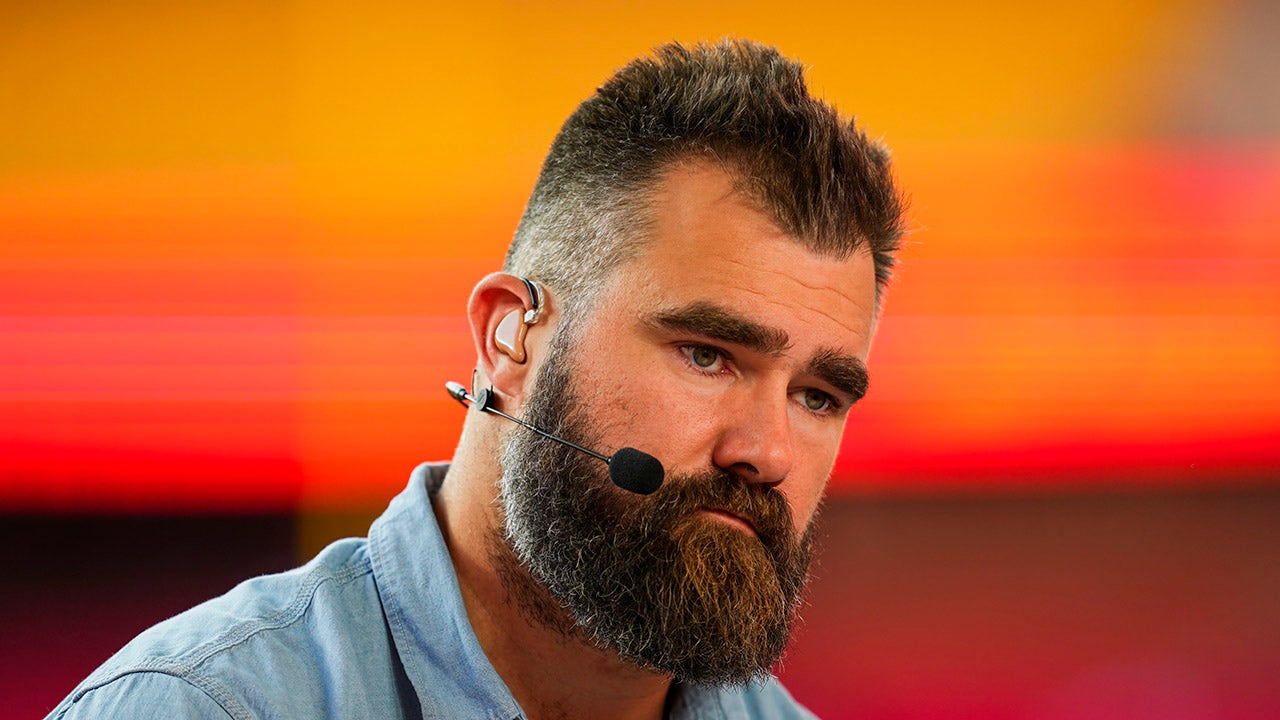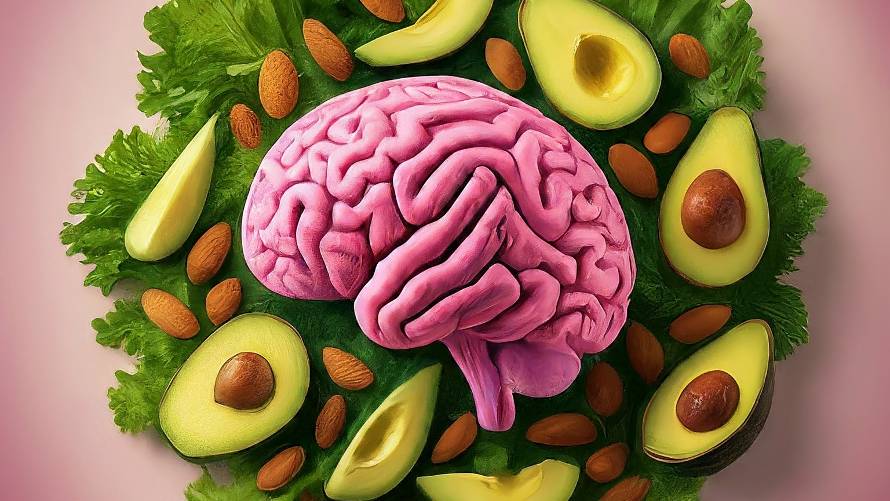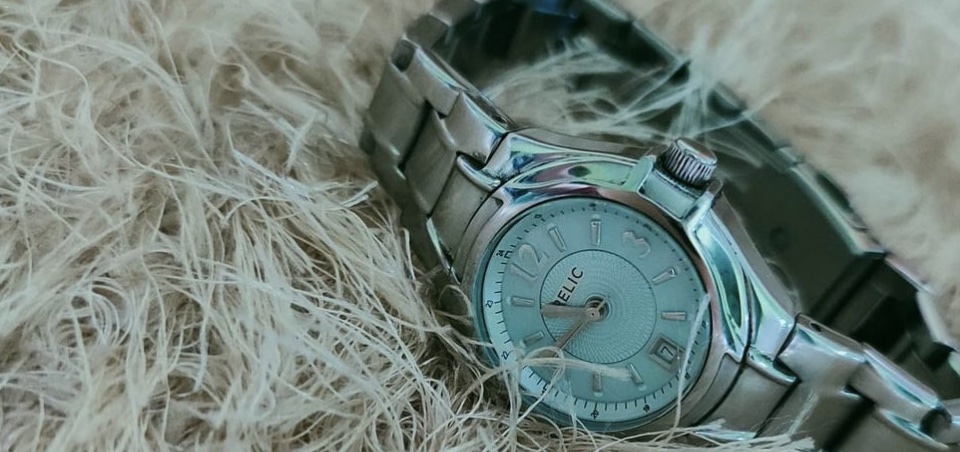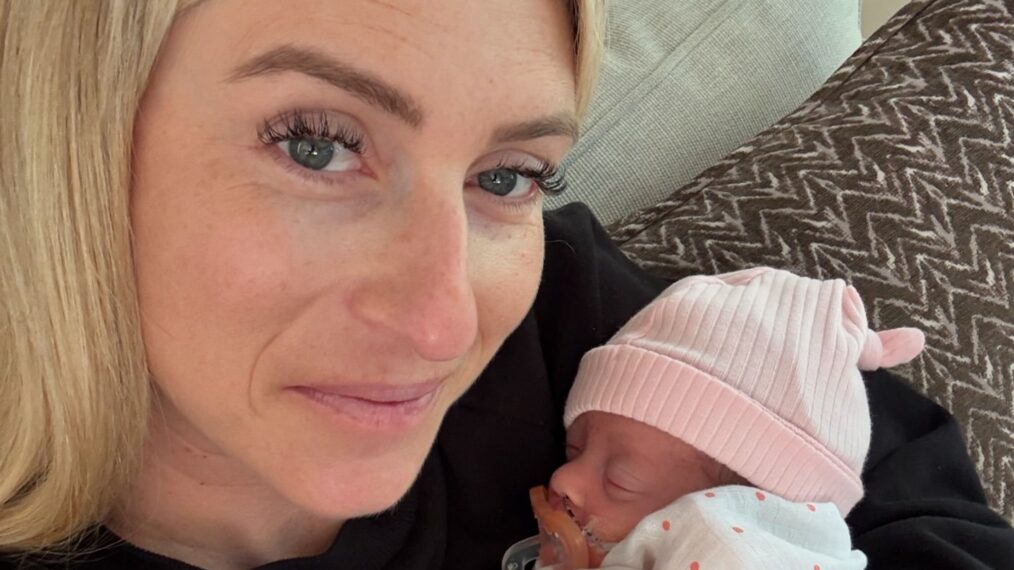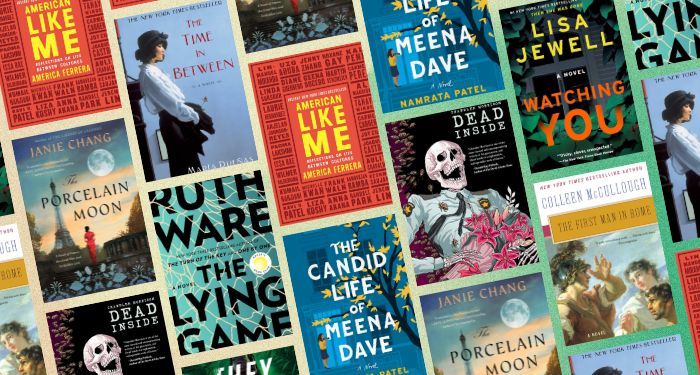For Halloween this year, we have a special treat for you. Medical historian Suzie Edge’s hobby is telling her hundreds of thousands of followers on TikTok the true health histories of famous people throughout history – from Jonathan Swift’s syphilis, to the time, hundreds of years ago, that angry Dutch rioters killed and partially ate their prime minister.
And she’s got a new book out called Vital Organs, which I had a chance to sit down and talk to her about. It zeroes in on, you guessed it, the stories of specific body parts in history. From Napoleon’s penis to the surprisingly fashionable fistula surgery King Louis XIV received. And even the research ethics of some of the earliest cases of medical miracles, like Alexis St. Martin, who lived for decades after an accident left his stomach partially open to the world.
One word of caution: this is an interview about the human body, and also the things that can go wrong with it. So as you might guess, you may find sections of it gory, gruesome, or otherwise difficult. And that’s completely understandable. If that’s not your thing, please come back to us for the weekly show on Friday! But if you’re game…continue on.
Transcript
Christie Taylor: My first question for you is really, just, ‘Why write a book about all of these, sort of, famous organs throughout history?’
Suzie Edge: I’ve been collecting these stories of body parts for as long as I’ve been studying anatomy and physiology. I have to be really careful how I say that. I have to say, ‘Stories of’, and not just, ‘Collecting body parts’, I get funny looks for that. Yes, I’ve just been fascinated by the human body for as long as I can remember and, you know, I studied anatomy and physiology early on, and molecular biology, before I became a doctor and those historical stories have always stayed with me. And I love to think of people in that way, in terms of their bodies, because it makes them more real to me. Often, when we’re reading history, we’re talking about what people did, what people even wrote or what people said. When you think about them in terms of body parts, or ailments, or, you know, it really makes them come alive to me in that way. And I was writing my first book, which was all about the deaths of the kings and queens in England and Scotland. And as I was doing so, lots of stories were coming up of other monarchs around the world or other characters around the world and I just couldn’t let them go. I had to bring them together as well.
Christie Taylor: You have quite a few stories of, particularly royalty’s, various gruesome, at times, ailments. Are they just more widely written about? In terms of, is it easier to understand, like, Kaiser Wilhelm’s medical history than ordinary people off the street at that time?
Suzie Edge: Absolutely, yes. People were writing about the big characters and the monarchs in particular. They weren’t always writing the truth, because there was often something to be said. There was often political agenda, and religious agenda, and gain in writing about these people. But yes, the monarchs were recorded more and, often, you see, what I wanted to do with this book was to find stories that were attached to a specific person. So, if I found stories where, as an example, maybe I would find stories where people might get their hands chopped off for various misdemeanours but I couldn’t find specific people involved. Whereas, with the monarchs, often, there were specific people involved. You know, Louis XIV, I could have written the whole book about Louis XIV of France and his ailments.
Christie Taylor: I was struck by many of your stories about Louis XIV and I definitely want to get to those.
Suzie Edge: He kept cropping up, yes.
Christie Taylor: Well, you know, speaking of Louis XIV then, and I feel like I’m diving right into the deep end here with Louis XIV but, you know, he had this very famous surgery for a fistula and I would love for you to tell that story in your own words, of course.
Suzie Edge: Yes, so, at some point, Louis XIV felt a discomfort in his rear end and, rather than leave it alone like anybody would do, he prodded and poked at it until it got worse. His physicians did the same as well, they prodded and poked with hot irons, and they put poultices on, and herbs, and tried all sorts of things. But it just became infected and got worse, it grew into an abscess and from there it turned into a fistula. So, a perianal abscess that turned into a fistula, that’s a track that runs from one cavity to another if you like. And he, really, the only way to put it is, he developed a new hole in his rear end and it was causing a lot of pain, a lot of discomfort. The physicians eventually gave up and got in touch with the surgeons. They had to turn to the lowly surgeons who were in the streets chopping away. But they called on a chap called Felix, who came along and had a look between the king’s legs and decided that he couldn’t operate straight away. He had to go out and practise and he practised on the people of Paris. He found people in prisons and hospitals and he developed an operation, and he developed tools. We don’t really know what happened to many of them, but he came back to the king and he spent three or four hours between the king’s legs de-roofing this fistula and cleaning it all out and the king survived. And it became fashionable in court, then, that one might look good if you’d had your own fistula operation as well.
Christie Taylor: I mean, that’s the part that is wild to me. That fistula operations became a fashion or that people would have surgery just because the king had had surgery. This almost speaks, just to the sway, I mean, I’m coming from the US, but the sway of royalty in France at the time.
Suzie Edge: Yes, the madness. And it goes back to what we were saying before about the monarchs being written about. There’s all this reverence and this idea that he was a deity and, yes, they wanted to be like him. And so, cutting about in the rear end was the way to do it. I think I’ve told this story 100 times and yet, every time, it still makes me just think, ‘Oh.’ I squirm as well in my seat.
Christie Taylor: Yes, yes. I mean, I just think of the people who were practised upon in the name of healing the king. This is also a medical ethics story, at the end of the day, too.
Suzie Edge: Yes, and that, actually, is a theme that comes up a lot throughout the book. There’s a lot of thoughts about ethics, particularly consent, which is just wild to me, some of the stories over the years.
Christie Taylor: Let’s talk about Alexis St. Martin. So, he had this very dramatic chest injury, or abdominal injury, that laid bare his stomach for the world to see and he also is the story of being a professional, research subject who, eventually, objected to this. Tell us about him.
Suzie Edge: This is probably one of my favourite stories, and I think that’s because of the surprise that it elicits and continues to elicit as you, sort of, go through the story. But, Alexis St. Martin was a fur trader from Michigan and, in the 1820s, he was standing in line at a trading post. He was accidentally shot in the chest, in the abdomen, at close range and a local military surgeon was called. A chap called Beaumont came along and had a look, and what he found, he described the scene, he said, ‘There were ribs and lungs sticking out,’ and he could see the breakfast as well that Martin had had was oozing out, and he put him back together. And that, to me, is incredible. This chap survived, Beaumont, despite the doctor’s interventions, he survived. But, the wound healed and all around the wound healed but he was left with this patent hole into his stomach. And one could see in and see what was in there. And St. Martin was an illiterate labourer and he couldn’t then find work again. So, Beaumont pretended to be a very nice chap and gave him a job as an odd-job man within his home. But, his real reasoning was that he wanted to study this chap with an open window into his stomach, and study him he did, because he did all sorts of things. He would put bits of food on string and put them into the hole, and then pull them out to see what had happened digestion-wise. And he wrote a book, he did hundreds of experiments and he wrote a book about it, he became known as ‘The Father of Gastric Physiology’. And these were things that we couldn’t see before, because you couldn’t see into a stomach before and, although people had cut into animals to have a look, they tended to die. And, also, people didn’t really quite believe that us, gentle humans, had so much acid as the animals did. So, these were things that were new. I mean, at one point, he even stuck his tongue in it to see what it would taste like.
Christie Taylor: Did he report back on the details of what it tasted like?
Suzie Edge: He said it was not quite as acidic as he thought it might be. So, a little bit. It was a bit disappointing really, but yes, that’s what he said. He kept him and he studied him and St. Martin wasn’t that fussed to be this guinea pig, if you like. He tried to run away and the surgeon, Beaumont, at that point, said, ‘This young chap, this boy is so ungrateful.’ And that was the power, wasn’t it? That medical men had over others, particularly those who were illiterate. And he controlled him a lot but Beaumont died quite young and St. Martin managed to get away.
Christie Taylor: And he lived quite a long life, actually. He had children, he lived many decades and, I believe, as a last act of resistance to him being studied, his family actually set his body out to decompose. Was that what happened?
Suzie Edge: Yes, the army still believed that there was more to gain from his dead body and had sent a bag to the family saying, ‘Please put his stomach in the bag and send it back to us so that we can continue to study it.’ And the family said no, and in fact, they sent a telegram saying, you know, ‘If you come near it, you’ll be shot.’ And yes, they put his body out in the sun, they kept everybody away from it until it got to a point where it was too putrefied for anybody to want to study it. And, to me, that’s a very sad ending, really. But, yes, he lived a long life with that hole in his side. It’s a remarkable story.
Christie Taylor: I think, one of the things that I took away from this book was just the awe at things people could survive, before we had what we think of as modern medicine, at this time. You know, the various surgeries, and infections, and amputations, and, you know, mutilations of various kinds that people underwent to cure conditions. But these are also stories of how our understanding of medicine advanced, aren’t they? As you said, Alexis St. Martin taught us about how stomachs work. I’m also thinking of the story of-, is it Hugh Montgomery? Who, you know, similar to Alexis, but his heart was open for folks to see.
Suzie Edge: Incredible story and, again, he went on to have a family and live a long life. And he had a hole which one could see his heart beating through. He was even taken to the king and the king stuck his finger in to feel it. And, yes, I think the thing about these particular stories is, they’re rare. They’re few and far between because, mostly, people didn’t survive. But, when I tell these stories, when I make the videos that I make online, on TikTok for instance. People often come back to me with comments saying, ‘This is impossible, he wouldn’t have survived before antibiotics.’ And I have to remind people that antibiotics, you know, compared to humans, haven’t been around that long and, although they do incredible things and save lives, the body is also very, very good at fighting as well. And there are a few people out there who have had incredible things happen to them, like St. Martin, like Hugh Montgomery, like Phineas Gage, who survived and, you know, have gone on to help us with an understanding, whether they consented or not. With an understanding more of the human body and those stories are all the more remarkable for it, but the body can do incredible things.
Christie Taylor: Was there a story that you uncovered in writing this book, or in the lead up to it, that you found either wildly unbelievable or very, you know, I don’t know if much can put you off your meals but, perhaps, too gross for even you?
Suzie Edge: To be honest, the story of Alexis St. Martin, when I’m asked that question, he’s the one that I bring up. Maybe, it takes a lot to throw me off my stride or my lunch, to be honest. There was a story of a woman called Fanny Burney, who was a novelist in the 19th Century, who discovered a lump in her breast. And it got to the point where she couldn’t really move her arm very well and needed help. And the surgeons decided that they were going to go in and operate. And they did, and there was no anaesthetic. And she described this moment of seeing the glint of the knife come down towards her chest, and she could feel it scraping along her ribs as he carried out the operation. She wrote in a letter to her sister, nine months later, when she was still recovering, she wrote this letter describing the agony of that and I could feel it. I could feel it in her words. And, yes, she was a novelist and, yes, she had the opportunity to write those things down. And we can see that in the British Library, those letters, but still, I felt it. I felt, writing those words, I could just feel that pain and, yes, someone to thank for anaesthetic, and antiseptics, and what have you.
Christie Taylor: I mean, besides anaesthetics, the medical advances you talk about, include, the first kidney transplantation. The Herrick Brothers, who happened to be twins, who managed to share kidneys without rejection, was this the first time that a successful kidney transplantation took?
Suzie Edge: Yes, generally, when I’m doing my historical reading, I go a lot further back. And, despite surgical training, I hadn’t really ever read much about the Herrick’s and the first kidney operation and I was loving that story. The surgeons were trying to come up with ways to do it and were finding rejection after rejection. And there was an idea that closer family members could have a better chance. There was an idea of that. So, Richard was talking to the surgeon and said, ‘Look, I’d do anything for my brother. I’d give him my kidney if I could.’ And in a way, it was a throwaway comment but the surgeon thought, ‘Well, hang on a minute. This is interesting.’ And it turned out these brothers were identical twins and so they went for it, and it worked. I don’t know how that passed me by, in all my medical training and historical reading, that one. I loved that one.
Christie Taylor: Yes, as we talk about new frontiers in transplantation with xenotransplantation and even growing human organs in pigs, for example. It feels really remarkable to look back to that one, simple success that, sort of, kicked off saving so many lives, as transplants have.
Suzie Edge: And, within my parents’ lifetime as well, you know? Not that long ago.
Christie Taylor: You’re also writing about-, like, it’s surprising to me, I guess, to hear that amputation, for example, is still a gnarly and difficult medical procedure. That it is something that we’ve necessarily gotten down to a ‘T’ or sorted. You know, tell me a bit more about that.
Suzie Edge: Yes, I think we have an idea that it’s an easy option and, yet, people are still left with incredible pain and it’s very, very difficult to deal with the pain. The job of the anaesthetists really, afterwards, the chronic pain anaesthetists and specialists, they do a remarkable job and yet, we still have issues. Although, I was working with a surgeon a couple of years ago who said to me that the amputation is often a way of, it’s not creating a disability, it’s doing the opposite, you know, because it’s done for a reason. But people still have issues with pain and we saw a huge number of casualties coming back from Iraq and Afghanistan, didn’t we? So, if not normalising, we’re starting to see, again, a lot more people with amputation but they’re not out of the woods, they’re still dealing with pain.
Christie Taylor: There are various accounts we read of Kaiser Wilhelm, for example, whose physical disabilities are, sort of, attributed to him being a mean, nasty person. How much does that hold up for you in doing the research?
Suzie Edge: We’re still doing this to people in fiction, in movies and in books. I was speaking to somebody last week who’s writing Bond books and still, he has this need or this want, I suppose, this desire, to make the villain disabled in some way or have some sort of look about him that is a physical manifestation of the evil. Even though we talk about it, even though we say that we don’t want to see that any more. In fiction and in the movies, it’s still happening. It still comes up and we use it a lot. It’s something that we’ve done for a thousand years. You know, people would write about the death of William the Conqueror in England. They wrote about how his body exploded because he was a nasty, horrible man and he deserved everything that he got. And we’ve done that ever since then and we’re still doing it. You know, when Putin invaded Ukraine, all these pictures were going about of his face and people were saying that this man had a problem, maybe a cancer problem, and he was having treatments with chemotherapy and steroids. And, therefore, that must be contributing to his reasoning for doing terrible things. We’re still doing it. We’re still looking towards the physical manifestations of disability and we’re associating that with evil. And yes, it winds me up a little bit because we talk the talk, but I don’t think things have changed much.
Christie Taylor: Well, back into history again to when you talk about Napoleon or Adolf Hitler, people were looking at their relationship to their genitalia as reasons that they did what they did. Which, again, sort of draws back to, you know, ‘The body drives the mind’, in some way.
Suzie Edge: Yes, I mean, Hitler, people still sing this song about Hitler only having one ball, and the other is in the Albert Hall. And, there are other characters mentioned in that song but people cling on to this idea that Hitler was somewhat lesser of a man in that way. And there’s this idea that he had cryptorchidism and yet, you know, this is something that a lot of men had and they don’t go rampaging through Europe killing people. But there again, as you say, absolutely, there’s this idea that, ‘It has to be a health manifestation.’ You know, you talked about Kaiser Wilhelm before, that it’s got to be something to do with his withered arm that made him the character that he was, and needing to prove a point and, therefore, rampaging through Europe starting wars. Yes, we’re still doing that.
Christie Taylor: Well, and we do that in the reverse too, right? I mean, looking at the brain of Albert Einstein, which was stolen upon his death and, you know, this one guy was slicing it up into little slides to try to understand the root of the man who brought us relativity and not really finding it.
Suzie Edge: Yes, and I think there was a disappointment, almost, in what I read. Not from me, but from that people were disappointed in finding that Albert Einstein’s brain was not this incredible, different, glowing thing. They cut into it and found that, really, it looks pretty much like yours and mine. There was a little bit of extra growth in the Corpus Callosum, the connections in there. But, did that lead to his genius? Or did that come because of all the thinking that he did? You know, you can’t say. And people wanted to go in there and find a reason for that genius and you’re absolutely right, it’s the same story, isn’t it? We want to attribute it to this physical manifestation and also, I think, people want to find something so that they can go, ‘Ah well, you see, we don’t think like that because he was special physically. Therefore, we’re okay, we’re off the hook because we can’t do it, because he had something special.’ Yes, you’re right.
Christie Taylor: There’s a lot about our relationship with death in this book too. Like, our willingness to be present or not with dead bodies, for example. You know, the final chapter, you write about exhuming dead queens, for example, just to have their bodies out and about. Did you see a shift over history? You know, does it appear that there’s a different relationship with the physical remains now than there was at the time? Like, when Queen Inês of Portugal was brought back out of her grave.
Suzie Edge: Yes, I do. I do see a difference there, actually, that people do seem very surprised now that the Georgians and the Victorians, in particular, in England were just really into digging up dead bodies, and taking bits, and looking to see if there was anything. You know, the thing about having a look at a dead body, again, over the last thousand years is that there was often a religious reason to do so. People were looking for signs of saintly-hood, because an intact body was a sign of saintliness and the opposite, of course, was a sign of the opposite from saintliness. And so, yes, the people, they didn’t mind. There’s a wonderful story of William the Conqueror, again, to go back to him, going way back. Before he came over to England from France he got caught up because the weather was really bad and he had a lot of troops milling around, waiting to get on the boat, whose moral was dropping. So, he went and dug up the body of Saint Valery, and paraded this body around, and they all had to bow before it, and kiss it, and worship this body. And in that way, he was going to bestow some sort of greatness onto those troops, and they went across and they conquered England. So, maybe it worked, who knows? But yes, again, Inês de Castro, a queen who was dug up by her husband. She was killed by his father, the king, and when he became king himself he thought, ‘Well, I want my queen back.’ So, he dug her up and he dressed he in robes, and put a crown on her head, and made people kiss her hand in reverence. But, more lately, nowadays, there’s more of an idea that these Christian burials should be left alone to rest in peace. And often, it comes up that, because we have the technology, the technology of DNA analysis or CT scanning, Carbon Radio 14 Dating, these sorts of things.
That, because we have these now, surely, we should go in and answer the historical questions that we’ve had for years. Like, for instance, the two princes in the tower who went missing in 1483. There were bones found in the Tower of London in the 1700s and they were assumed to be those of the missing boys and they were put into an urn and they sit in Westminster Abbey. And it’s really divided the people I talk to. Half of them really want to get in there, and open up the urn, and do the analyses that we can do to see if we can find out anything. If there was DNA available, we could compare that to that that we have from the known Richard III who was found under a car park in 2012. So, we could do that but the question is, ‘Do we want to? Do we want to go opening up that urn?’ And I think that, 200 years ago, George IV would have been in there. He would have been in there at the front of the queue, digging those bones up to have a look. But nowadays, it’s a little bit of a harder sell.
Christie Taylor: And when you talk about that being a harder sell, it makes me think of the story you told about, it started with the philosopher, Jeremy Bentham, who wanted his head preserved in order that, like, people after him would be less afraid of death. And then he wanted it preserved in the Australian way, which was referencing the Maori’s and their sacred, death tradition, right, of preserving people’s heads. And the TLDR was that Jeremy Bentham’s head turned out terrible, and frightening, and horrible, but you turn it into this story about those heads from the Maori people that became this, sort of, curio for Europeans to trade around and have now become an issue. Again, if we talk about ethics, the returning of people’s remains back to their people. And I feel like I just told the whole story for you, but how do you unpack all of that?
Suzie Edge: Yes, I started with Jeremy Bentham, that’s where it started with me because I didn’t really know much about the New Zealand-, the Maori Mokomokai heads. I had seen pictures in the past but I didn’t know much about them, and I found that the New Zealanders were very good at preserving the heads. They had their way of doing it, they’d developed it over many, many years and the heads of chiefs that were well-tattooed were kept and were worshipped, I suppose. Maybe not the word, but they were kept, and also the heads of enemies as well were kept and were not treated quite so nicely, but they were preserved. So, Jeremy Bentham thought this would be a good thing to do, he asked his friend, a doctor, to do his autopsy and to do that to his head, and he just didn’t get it right. So, Jeremy Bentham’s head is quite the thing to look at but it certainly doesn’t look like a preserved Mokomokai head. And you’re right, it led me down this path of finding out about all these Maori Mokomokai heads that are sitting in museums in America, in Europe, in the UK, and they’re not necessarily on display because, at some point, it was realised that maybe it was a bit inappropriate. But they’re now just sitting in dusty shelves in the backs of museums and is that as bad? Perhaps?
There has been an effort, it started in France, by a curator, I forget his name, but of a museum. He took over a museum, probably about 2010, I think, and he realised-, he found some of these heads and he thought, ‘These should go home.’ It took a very long time, the French had said, ‘No.’ The French had said that, ‘Anything that is in a French museum belongs there and that is it now.’ And they also said that, ‘Anything that is in a museum which was once human body parts no longer is that, it’s now a different type of artefact and it belongs to France and they’re not going home.’ But a number of things happened and, eventually, it was decided that these could go home and a lot of them have made their way back. The Maori’s are very grateful for that but one of the things that really struck me was how-, you see, these heads were very, very popular as the trophy cabinets of the West. One was really smart if you had one of these heads, but there weren’t enough heads to go around. And so, at one point, people, imprisoned people, imprisoned Maoris were tattooed so that they could be killed, so that their heads could be taken and sold as trophies and that just blew me away, that idea that that happened. I had no idea and, yes, it’s nice that those are making their way home now.
Christie Taylor: Is there a takeaway, besides these isolated stories, that you hope people come away from your book with? That, you know, aside from googling how badly Jeremy Bentham’s head was pickled which, I didn’t think was that bad but it also, kind of, just looks cartoonish.
Suzie Edge: It does, doesn’t it? It doesn’t look real.
Christie Taylor: It does not, but I feel, ‘That’s what you get.’ When you invent the Panopticon.
Suzie Edge: Do you know, a lot of the stories that we’ve been telling are terribly serious, aren’t they? But I think, at the end of the day, I just wanted to have fun with this because the human body is an incredible, incredibly strong thing. But it’s also incredibly vulnerable, but it’s also very silly, and there are some very silly ways to look at the ways we deal with the human body after death. Particularly in body parts and all the rest of it, and I hope that I had a lot of fun with it and tried to bring that across as well.
Christie Taylor: As someone who communicates with so many people via TikTok, you know, what do you find drives people’s interest? Is it just, like, ‘Oh gross’? You know, is it morbid curiosity? Is it like the Dr-Pimple-Popper effect? I don’t know if you had that in the UK?
Suzie Edge: Yes, yes.
Christie Taylor: Or is it something bigger?
Suzie Edge: I would love, I would really love that these stories that I tell, because they’re just very short snippets. I’d love them to be gateway stories to the discussion that we’ve had. You know? Like the ethics, and the consent, and what-have-you. I’d love that, but I think a lot of it, I think you’re right, a lot of it just being grossed out over cornflakes at breakfast time and the sheer surprise at some of these stories. That does seem to drive people. More, more goo, more guts, more gore, trying to push me to get a ban on TikTok for sharing pictures of Jeremy Bentham’s head, for instance. I’d love these little stories to be gateways to people learning more about, either, the historical side, or the scientific side, you know, those things, I’ve been able to bring them together really nicely, I think, and I’d love that. But I think, sometimes, people just like a good, gruesome story, don’t they?
Christie Taylor: Well, thank you so much, Suzie.
Suzie Edge: You’re very welcome. It was good to have a chat.
Topics:

